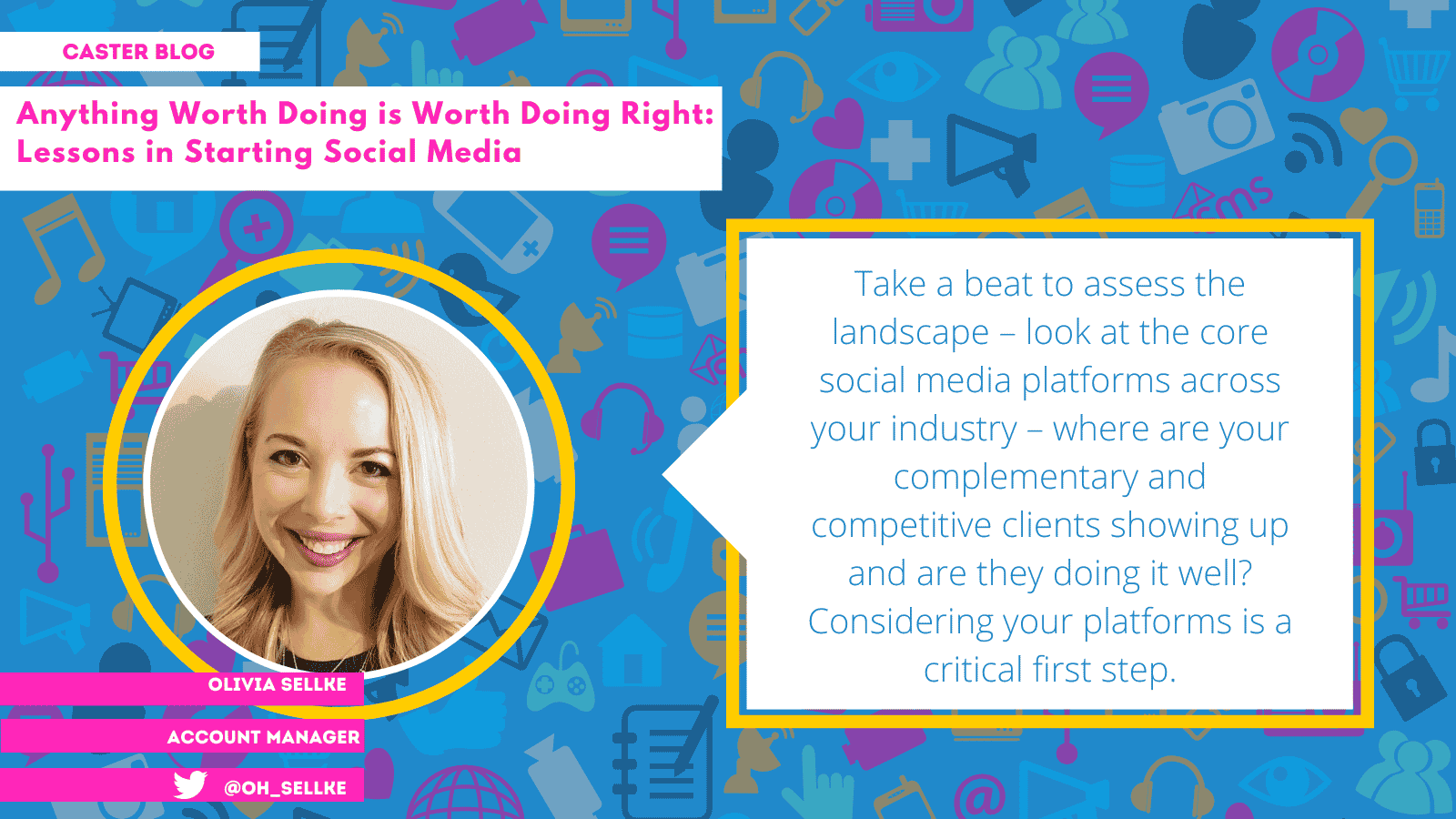
Anything Worth Doing is Worth Doing Right: Lessons in Starting Social Media
Social media has proliferated PR and marketing as an essential tool – so much so that every year on June 30th we celebrate World Social Media Day which was introduced by the team at Mashable in 2010. Over the last 12 years it’s safe to say the social media landscape has continued to evolve and shift.
I won’t lie when I am looking at a new business – whether it’s the new Sushi joint down the street or an Etsy vendor – I look at their social media presence. Social media can help your company establish credibility in the marketplace ,which ultimately can lead to more business. And it’s not just for consumer brands either. B2B and B2D must use social channels to communicate with their audiences – press, investors, partners, customers, shareholders. As with any powerful tool, there is a shadow side to social media – when not used appropriately it can cause severe and lasting damage to your brand.

As famed and fictional Rockford Peach Coach Jimmy Dugan says, “Anything worth doing is worth doing right.”
Establishing your brand on social media is not a flippant decision and maintaining your accounts is critical once you start down the path. Just as my colleague Kayla outlined when you may not be ready for PR, let’s take a look at five common stumbling blocks that could make your attempts at social worse than having no presence at all.
1.Carefully Consider Your Platforms
Unpopular Opinion: You don’t need to be on every single social media platform. For example, Pinterest only makes sense for a tiny sliver of our clients. Just because you can set up an account does not mean you should. When thinking about what platforms your company should be on consider who you are trying to reach, is your target audience on TikTok? If not, then probably best to not start there.
Take a beat to assess the landscape – look at the core social media platforms across your industry – where are your complementary and competitive clients showing up and are they doing it well? Considering your platforms is a critical first step – and if you are unsure start with one platform and build from there. Going all in on every platform without a clear strategy has the potential to burn your team out.
2.Content is King
Step two in considering your social media presence is thinking about your content goals. Anyone can make a social media account, but it takes the right mix of content to make your presence meaningful. It’s simply not enough to “show up to the party” you’ve got to bring those killer dance moves or that crowd-pleasing appetizer. Are you looking to drive traffic to a certain area of your website, engage with customers, or show a little bit of the fun side of your corporate brand? You don’t have to pick just one goal but your content needs to be on point if you expect any one of these goals to be successful.
If your company is brand new on the social media front – take some time to audit what content you have that would translate to social ie: blogs, videos, interviews etc. Here is the challenge with content, it’s easy to think you have more than enough to get started – but social media is a hungry content beast and you don’t want to underestimate just how much time your team will spend crafting the right messages for your various social channels.
Most of our clients that we run social media for operate with a clear content calendar to make sure that all accounts are consistently posting and posting a variety of types of content from recent thought leadership pieces to videos and even custom graphics (check out our favorite way to do this here). If your team is not prepared to put time into curating a content calendar your social efforts can easily flounder – and your audience will be able to tell….
3.Cadence is a Close Second
Content and cadence go hand in hand – you really can’t do one without the other. One of the most challenging parts of establishing brands on social media is figuring out the right cadence. How often should you be posting, what are the optimal times to post, does it vary by platform? All very valid questions on the quest to win the social media game – and unfortunately there is not a one size fits all answer. It takes some time and testing to learn how your audience responds to your posts and their social media habits. Alex provided some great guidelines for finding that “Golden Hour” for posting in her recent blog about LinkedIn’s algorithm updates. Seriously bookmark that one to read later – it’s got a ton of helpful insights.
TLDR: Don’t jump into the social media fire if you don’t have a plan for how and when content is posted and by who. Social media takes commitment, while in the early days it may have been something tossed on an intern’s desk, establishing your brand on social means there should be oversight and consistency across all accounts.
4.Lead the conversation
It won’t surprise you that at PR pros we think that messaging is important – words have weight and they matter. Having your frameworks for corporate messaging and how your company voice will appear on social are important factors that should be discussed well before you post that first tweet. Establishing your internal policy for how you respond to everything from customer complaints to shake-ups in world news will help you see through the fog when the social chaos hits. Getting your guidelines in order will also help keep you from being band-wagon posters – remember the ice bucket challenge? When you decide to be part of a trending topic make sure it really does align with your company’s values.
Leading the conversation on topics important to you brand is a much more effective way for you to utilize social media to engage with your audience. Anyone can re-tweet or post a happy holiday image – while those posts have their place it can’t make up the majority of your content – make your presence meaningful.
5.Engage and interact
Social media is not meant to be a platform where you just post into the ether – it is meant to be well…social! Make it part of your team’s process to not just log on to post but to engage and interact. Taking the time to follow people back, like and engage with comments and mentions will help your social media metrics exponentially. Being intentional about engagement and interaction shows your audience that there is someone behind the brand.
Interested in getting more personalized help for your company’s social program – reach out to us! We do programs of all sizes and scopes including organic, real-time, and paid.
